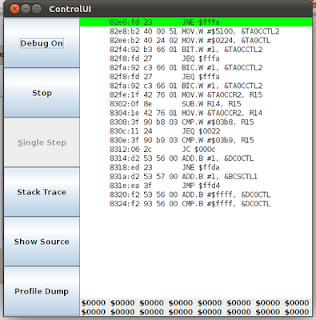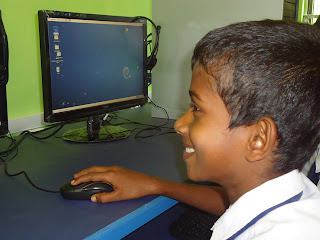TInyOS comes with some example applications to try out before we write a single NesC code. You can find them in the directory /opt/tinyos-2.1.1/apps. In this post I write down how to try the example blink application provided by TinyOS on a MicaZ mote.
If you still haven't installed TinyOS in your Ubuntu system do it. My previous post may help on this. This is the steps I follow to try the blink application.
1) Plug the MIB510 program board to power supply and switch it on. Plug a MicaZ mote to the program board via its 51pin connector.
2) Open the file located at /opt/tinyos-2.1.1/support/make/Makedefaults and add the following two lines to it,
DEFAULT_PROGRAM=mib510
MIB510=/dev/ttyUSB0
3) Now in the terminal give the following two commands to burn the example blink application to MicaZ mote.
cd /opt/tinyos-2.1.1/apps/Blink
sudo make micaz install
After the MicaZ motes flash memory is written with the app, you will see that three LEDs on the MIB510 program board are blinking. That is the output of the blink program which come to the program board since they are connected. If you remove the MicaZ mote from the program board, put batteries on it and switch it on, you will see the program output as blinking LEDs on the mote.
If you still haven't installed TinyOS in your Ubuntu system do it. My previous post may help on this. This is the steps I follow to try the blink application.
1) Plug the MIB510 program board to power supply and switch it on. Plug a MicaZ mote to the program board via its 51pin connector.
 |
| MIB510 program board |
 |
| MicaZ mote |
2) Open the file located at /opt/tinyos-2.1.1/support/make/Makedefaults and add the following two lines to it,
DEFAULT_PROGRAM=mib510
MIB510=/dev/ttyUSB0
3) Now in the terminal give the following two commands to burn the example blink application to MicaZ mote.
cd /opt/tinyos-2.1.1/apps/Blink
sudo make micaz install
After the MicaZ motes flash memory is written with the app, you will see that three LEDs on the MIB510 program board are blinking. That is the output of the blink program which come to the program board since they are connected. If you remove the MicaZ mote from the program board, put batteries on it and switch it on, you will see the program output as blinking LEDs on the mote.





































